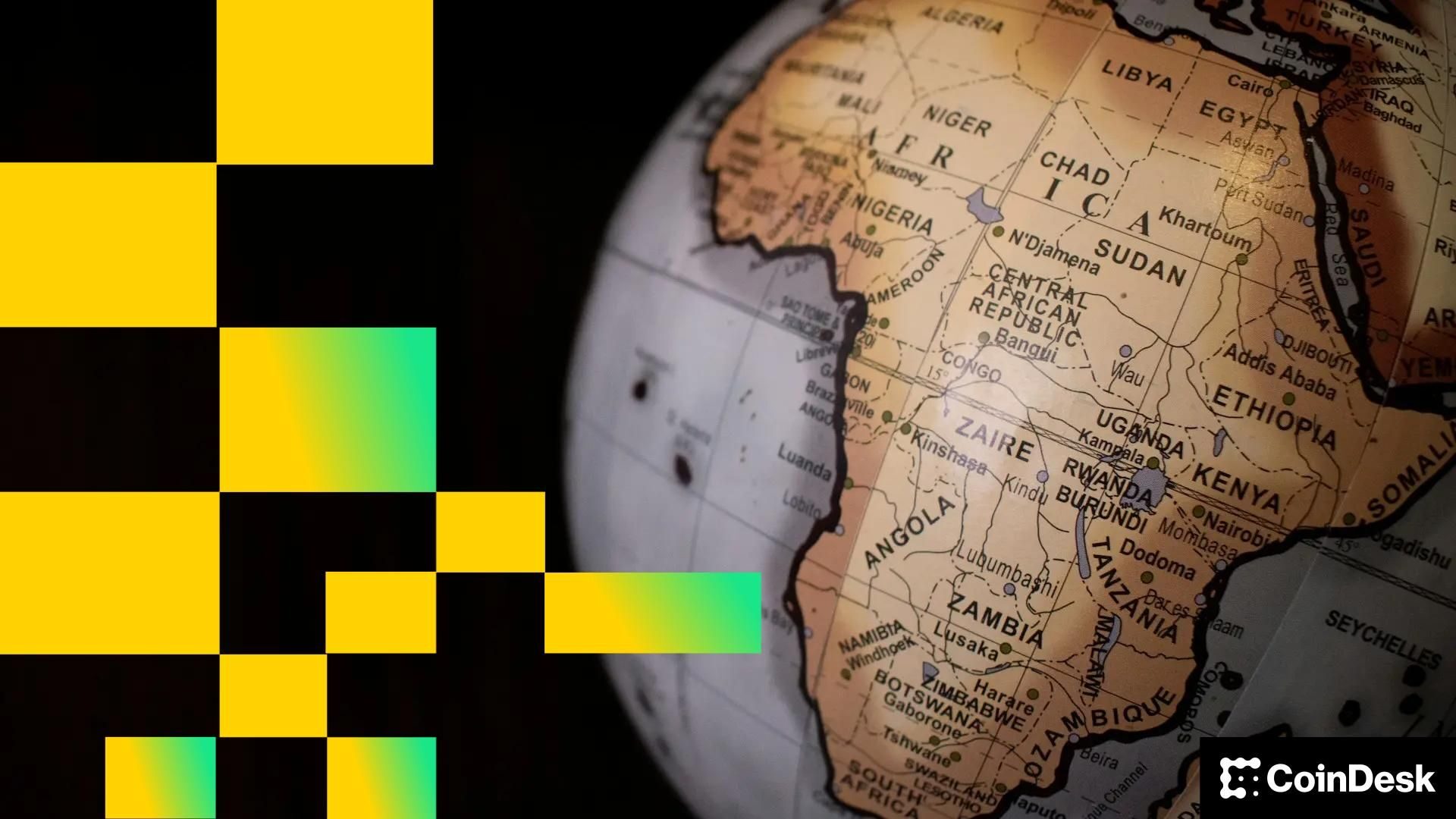Crypto Use Case: Africa Turns to Stablecoins, IOTA to Unlock $70B in Cross-Border Trading
Formed in partnership with the Tony Blair Institute and the WEF, the initiative aims to overhaul trade with USDT payments across 55 African nations.
Nov 17, 2025, 12:00 p.m.

- The African Continental Free Trade Area Secretariat and the IOTA Foundation are working with the Tony Blair Institute and World Economic Forum to overhaul how goods are moved using stablecoins.
- USDT will underpin cross-border payments, enabling instant settlement and new forms of trade finance.
- The aim is to replace paper-heavy trade processes, aiming to slash costs, cut border delays by over 50% and eliminate document fraud.
- ADAPT’s roadmap is to reach 55 AfCFTA nations by 2035, with projections of doubling intra-African trade and unlocking $70 billion in new economic value.
The African Continental Free Trade Area (AfCFTA) Secretariat and the IOTA Foundation have introduced a digital trade initiative that places stablecoin-based settlement at the center of efforts to overhaul how goods move across Africa.
The Africa Digital Access and Public Infrastructure for Trade (ADAPT), formed in partnership with the Tony Blair Institute and World Economic Forum (WEF), will establish a shared, open-source digital public infrastructure for the continent’s 55 member states, according to an announcement on Monday.
STORY CONTINUES BELOW
It aims to enable instant cross-border payments, verifiable digital trade documents, and interoperable digital identities. While the initiative is framed as a modernization of trade processes, those involved say stablecoins — specifically USDT — are expected to be a primary engine of adoption.
“Now that we’ve solved the data problem — digitizing and authenticating trade documents — we can do the trade finance part,” IOTA Foundation founder Dominik Schiener told CoinDesk. “We will also offer tokenization of physical asserts such as commodities and critical minerals, and cross-border payments using stablecoins like USDT for real-world payments.”
The timing of the initiative coincides with the far-reaching inflection point for regulatory oversight of digital currencies. Over the past year, stablecoins have gained clearer regulatory pathways in markets like the U.S. and Hong Kong, fueling ever-higher payment volumes and growing institutional acceptance.
For African governments, this presents an opportunity to leapfrog legacy financial infrastructure and plug directly into stablecoin rails that are becoming normalized worldwide.
Africa’s traders currently face an estimated $25 billion in annual payment transaction fees, while document fraud contributes to billions more in losses, according to Monday’s announcement. Trade logistics remain deeply analog: a single shipment may require 30 entities to exchange 240 paper documents. In Kenya, border agents previously needed to log into 13 different systems to verify a consignment.
Pilot deployments of IOTA’s technology in Kenya and Rwanda have already delivered tangible gains. Kenyan exporters are saving around $400 per month on printing and documentation, freight forwarders have cut manual paperwork by up to 60% and border clearance times have fallen from six hours to roughly 30 minutes. Kenya alone now posts around 100,000 transactions per day to IOTA’s distributed ledger.
ADAPT will begin with Kenya, Ghana and a third to-be-confirmed country (likely one in North Africa) before expanding continent-wide from 2026, with the goal of integrating all 55 AfCFTA nations by 2035. AfCFTA estimates digitalization could double intra-African trade, unlock $70 billion in trade value, and generate $23.6 billion in annual economic gains.
“We could help a miner in Rwanda get access to onchain trade finance at 50% of the cost, getting paid almost instantly with low transaction fees using USDT,” Schiener told CoinDesk. “This is how we move beyond the typical boom and bust cycles in crypto and anchor our industry with real assets, real adoption, and real value.”
AI Disclaimer: Parts of this article were generated with the assistance from AI tools and reviewed by our editorial team to ensure accuracy and adherence to our standards. For more information, see CoinDesk’s full AI Policy.
More For You
Nov 14, 2025

What to know:
- As of October 2025, GoPlus has generated $4.7M in total revenue across its product lines. The GoPlus App is the primary revenue driver, contributing $2.5M (approx. 53%), followed by the SafeToken Protocol at $1.7M.
- GoPlus Intelligence’s Token Security API averaged 717 million monthly calls year-to-date in 2025 , with a peak of nearly 1 billion calls in February 2025. Total blockchain-level requests, including transaction simulations, averaged an additional 350 million per month.
- Since its January 2025 launch , the $GPS token has registered over $5B in total spot volume and $10B in derivatives volume in 2025. Monthly spot volume peaked in March 2025 at over $1.1B , while derivatives volume peaked the same month at over $4B.
More For You
By Francisco Rodrigues, AI Boost|Edited by Aoyon Ashraf
Nov 15, 2025

The technology aims to expedite transactions and eliminate intermediaries, enabling the direct transfer of digital currencies over a blockchain-based system.
What to know:
- Alibaba’s global business-to-business platform will utilize tokenized deposits backed by fiat currencies, such as the US dollar and the euro, to streamline cross-border payments in partnership with JPMorgan.
- The technology aims to expedite transactions and eliminate intermediaries, enabling the direct transfer of digital currencies over a blockchain-based system.
- Alibaba will initially focus on bank-issued digital tokens, rather than stablecoins, for regulatory and operational clarity, and may explore stablecoins in the future.
-
Back to menu
Prices
-
Back to menu
-
Back to menu
Indices -
Back to menu
Research
-
Back to menu
Consensus 2026 -
Back to menu
Sponsored
-
Back to menu
Videos -
Back to menu
-
Back to menu
-
Back to menu
Webinars
Select Language








